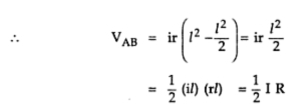கணவனால் அடிக்கப்பட்டு அல்லது உதைக்கப்பட்டு மனைவி வந்து நிற்பார்.பலரும் சொல்வார்கள்."அடிக்கிற கைதான் அணைக்கும்".வேறு போக்கிடம் ஏது? கொஞ்ச நேரத்தில் வீட்டுக்குப்போய் கணவனுக்கு உணவு சமைக்க ஆரம்பித்துவிடுவார்.அப்புறம் தம்பதிகள் சந்தோஷமாக இருப்பார்கள்.இன்னொரு நண்பர் வேறு விளக்கம் கொடுத்தார்.குழ்ந்தை ஓயாமல் தொல்லை செய்தால் தாய் அடித்து விடுவார்.சற்று நேரம் கழித்து வாரி அணைத்து கொஞ்சுவார்.இதெல்லாம் நாம் பார்த்துக் கொண்டிருப்பவைதான்.
அடிப்பதற்கு
இன்னொரு நிகழ்வு! பால்ய காலத்து நண்பர்கள் அவர்கள்.ஒருவர் இன்னொருவரைப் பற்றி தவறாக பேசியதாக நம்பகமான தகவல் கிடைத்தது.பேசுவதை குறைக்க ஆரம்பித்து பின்னர் முழுமையாக வெட்டிக்கொண்டு விட்டார்.அறுந்து விழுந்த உறவு விழுந்ததுதான்.பிறகு சேரவேயில்லை.
ஆளுமை உணர்ச்சி சார்ந்து இருப்பதற்கும்,அறிவு சார்ந்து இருப்பதற்குமான வித்தியாசம் இவை.இரண்டாவது நிகழ்வில் சிந்தித்து முடிவு செய்ததால் -நட்பு நன்மையைத் தராது என்று முடிவு செய்திருக்க வேண்டும்-பேசுவதைக் குறைத்து வெட்டிக் கொண்டுவிட்டார்.பெரிதாக சத்தம் போட்டு சண்டை ஆகவில்லை.ஆனால் சத்தம் போட்டு சண்டை போட்டவர்கள் உடனே சேர்ந்துவிடவும் செய்கிறார்கள்.
B.J.P என்று செல்லமாக அழைக்கப்படும் ஜொள்ளு பார்ட்டிகள் கிட்டத்தட்ட இந்தவகைதான்.உணர்ச்சி வழி நடப்பவர்கள் உறுதியற்ற படகு போலத்தான்.கரை சேர முடியும் என்று உறுதியாக சொல்ல முடியாது.ஆனால் இவர்களை நம்புபவர்களே அதிகம்.அன்பு எனும் உணர்ச்சி தூக்கலாக இருக்கும்போது இவர்களைத் தவிர யாராலும் அத்தனை அன்பை பொழிய முடியாது.சோகமாக வந்து நின்று கெஞ்சுவார்கள்.முற்றிலும் சுயநலம் சார்ந்தது என்பது வேறு விஷயம்.அடிப்பதற்கும் அணைப்பதற்கும் தேவையானது மிகுதியான உணர்ச்சிதான்.நம்முடைய உறவினர்களையும் நண்பர்களையும் இவ்வாறே புரிந்து கொள்ளவும் முடியும்.எந்த வகை என்று தெரிந்துவிட்டால் உறவுகளை பேணுவது எளிது.















































